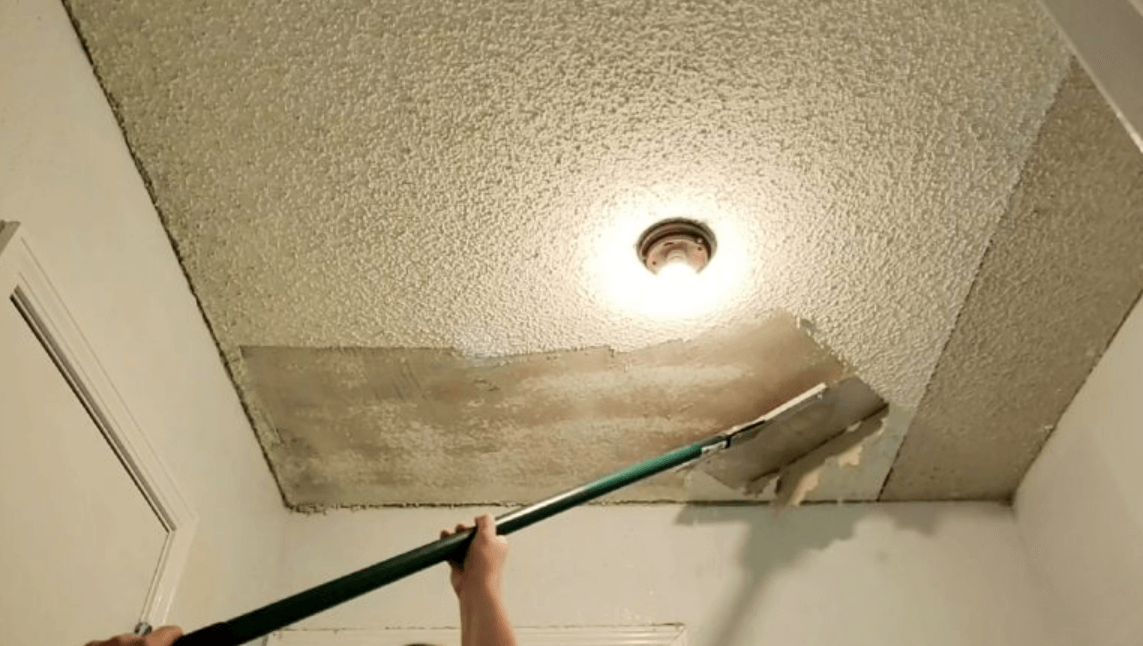If you want to enhance the durability of your concrete, then sealing it is a must. Concrete is a durable material, but it’s not impervious to damage from exposure to the elements and other factors.
Sealing your concrete can help protect it from water damage, staining, and other types of wear and tear. In this article, we’ll explore the importance of sealing your concrete and provide you with some tips on how to do it effectively.
Sealing concrete involves applying a protective coating or treatment that helps prevent moisture penetration and resists staining. The benefits of doing so are numerous – not only does sealing improve the surface’s durability, but it also enhances its overall appearance by giving it an attractive sheen. When it comes to choosing a concrete patio contractor for your sealing needs, it’s important to consider their experience, expertise, and reputation. Researching and comparing different contractors can help you find a reliable and skilled professional who will ensure the best results for your concrete patio.
Additionally, sealed surfaces are easier to clean and maintain than unsealed ones. So if you’re looking for ways to keep your concrete in top condition for years to come, read on!
Key Takeaways
– Sealing concrete is essential for protecting against weather, chemicals, and abrasion.
– Preparation, including cleaning and repairing damages, is crucial before applying sealant.
– Different types of sealers, including penetrating, topical, and decorative, provide various benefits.
– Regular maintenance, such as sweeping, cleaning spills, filling cracks, and applying sealant every few years, is key to enhancing durability and avoiding costly repairs.
Understand the Importance of Sealing Concrete
You gotta seal that concrete if you want it to last longer! It’s like putting on sunscreen for your skin – protection is key.
Concrete is a durable material, but it is still susceptible to deterioration due to various reasons such as exposure to harsh weather conditions, freeze-thaw cycles, chemical attacks, and abrasion. These factors can cause cracks, spalling, and scaling which not only compromise the structural integrity of the concrete but also make it look unappealing.
However, by sealing your concrete surfaces with a high-quality sealer, you can protect them from these damaging elements and enhance their lifespan.
The benefits of sealing your concrete surfaces are manifold. Firstly, it prevents moisture from penetrating into the pores and capillaries of the concrete which can lead to freeze-thaw damage in colder climates or efflorescence (white powdery substance) in warmer climates.
Secondly, sealing provides a protective layer that resists stains and spills from oil, grease, or chemicals making it easier to clean and maintain.
Thirdly, sealed surfaces have improved resistance against abrasion and wear caused by foot traffic or vehicular movement.
Lastly, sealing enhances the appearance of the surface by adding a glossy finish or enhancing its natural color while also protecting it from UV rays that cause fading.
Now that you understand why sealing your concrete surfaces is important, let’s explore different types of sealers available in the market today without wasting any time!
Types of Sealers
Now that you understand the importance of sealing your concrete, let’s discuss the different types of sealers available.
There are three main types: penetrating sealers, topical sealers, and decorative sealers. Penetrating sealers are used to protect concrete from water damage and chemical spills, while topical sealers form a protective layer on top of the concrete surface.
Decorative sealers add color and shine to your concrete while also providing protection. Knowing which type of sealer to use is crucial for enhancing the durability and longevity of your concrete surface.
Penetrating Sealers
By using a penetrating sealer, your concrete will become impenetrable like a fortress, shielding it from the harsh elements of nature. These sealers are designed to penetrate deep into the pores of the concrete, forming a chemical bond that creates an invisible barrier against water, oil, and other contaminants. This type of sealer is ideal for outdoor applications where exposure to rain and snow is common.
Here are three reasons why you should consider using a penetrating sealer on your concrete:
– It enhances durability: By preventing water and other liquids from entering the concrete’s pores, penetrating sealers help to prevent cracking and damage caused by freeze-thaw cycles.
– It reduces maintenance: Because penetrating sealers create such a strong barrier against moisture, they can significantly reduce the need for repairs and resealing in the future.
– It improves appearance: Penetrating sealers don’t change the color or texture of the concrete they’re applied to. Rather than covering up imperfections with an opaque coating, these sealers allow the natural beauty of your concrete to shine through.
Now that you’ve learned about how penetrating sealers work and their benefits, let’s take a look at another type of sealer: topical sealers.
Topical Sealers
Imagine a protective layer that sits on top of your concrete, shielding it from stains and wear – this is where topical sealers come in. These types of sealers are applied to the surface of the concrete and form a film-like barrier that protects against moisture, chemicals, and abrasion.
Topical sealers can be either solvent-based or water-based and come in glossy or matte finishes. One of the main benefits of using a topical sealer is its ability to enhance the color and texture of your concrete. The sealer can deepen the color, add shine, and bring out any decorative elements in the surface.
Additionally, topical sealers can provide UV protection to prevent fading over time. When choosing a sealer for your concrete project, it’s important to consider factors such as traffic levels, exposure to weather elements, and desired finish appearance. With proper application and maintenance, a topical sealer can significantly prolong the life of your concrete surface.
As you move into selecting decorative sealers for your project needs, remember that not all sealers are created equal in their abilities or purposes they serve on top of providing protection for your surfaces.
Decorative Sealers
Who knew that a sealer could be both protective and visually stunning? Welcome to the world of decorative sealers.
Not only do they provide excellent protection against damage caused by weather, chemicals, and abrasion, but they also come in a wide variety of color options to enhance the aesthetic appeal of your concrete surfaces.
Application methods for decorative sealers are similar to those used for topical sealers: spraying, rolling, or brushing. However, it’s important to note that decorative sealers require multiple coats for optimal performance and appearance.
When selecting a color option, consider the environment where the concrete surface is installed as well as personal style preferences. Some popular color options include earth tones, metallic finishes, and vibrant hues.
To ensure maximum adhesion and longevity of your decorative sealer, proper preparation is key. This involves thoroughly cleaning the surface and repairing any cracks or irregularities before applying the sealer.
Preparation
Before applying sealers to your concrete, you must prepare the surface properly. Start by cleaning the surface thoroughly, removing any dirt or debris that may be present.
Next, inspect for damages and repair them accordingly before proceeding with sealer application. Lastly, it’s important to allow sufficient drying time after repairs have been made to ensure that the sealer adheres properly and effectively protects your concrete from future damage.
Clean the Surface
To clean the surface of your concrete, you’ll need to start with surface preparation. This means removing any loose debris or dirt that may be present on the surface.
After that, it’s time to mix a solution of water and muriatic acid. The ratio should be one part acid to ten parts water. Be sure to wear protective gear like gloves and goggles when handling this strong chemical.
Once you have your cleaning solution mixed, use a stiff-bristled brush to scrub the surface thoroughly. Pay special attention to areas where stains or discolorations are present.
Rinse the surface well with water after scrubbing, making sure all of the acid mixture is removed from the surface.
With a clean and prepped surface, it’s time to move onto repairing any damages that may be present in your concrete structure.
Repair any Damages
Now it’s time to tackle any damages in the concrete structure by filling in cracks or holes with a concrete patching compound. Effective repair techniques involve cleaning out any debris or loose material from the damaged area before applying the patching compound. This ensures that the compound adheres well and forms a strong bond with the existing concrete surface.
Preventive maintenance is key to enhancing durability, so it’s important to address any damages as soon as they’re noticed. Waiting too long can cause further deterioration of the concrete, making repairs more difficult and costly.
Once you’ve filled in all cracks and holes, allow sufficient drying time before moving on to sealing to ensure that the repairs have fully cured and are ready for their next layer of protection.
Allow Sufficient Drying Time
After giving the concrete patching compound time to set and cure, it’s crucial to let the repairs dry completely before proceeding with the next step. Drying techniques play a vital role in enhancing the durability of your concrete.
The amount of time required for drying depends on several factors like humidity, temperature, and air circulation. Time management is crucial during this process as adequate drying time ensures that the repaired areas are strong enough to withstand exposure to heavy loads and other external factors.
It’s recommended to wait at least 24-48 hours before applying any sealant or coating on the surface. By allowing sufficient drying time, you’ll ensure that your concrete has a longer lifespan and can handle harsh conditions without cracking or breaking easily.
Now that you know how important drying is, let’s move on to discussing application methods for sealing your concrete surfaces.
Application
Applying a concrete sealer is a simple and effective way to increase the durability of your concrete. It not only protects against water damage but also prevents stains from oil or other substances. The benefits of sealing go beyond just aesthetics, as it can significantly extend the lifespan of your concrete.
To ensure proper application, there are some best techniques to follow. First, make sure the surface is clean and free of any debris or contaminants that could interfere with adhesion. Secondly, apply the sealer evenly with a sprayer or roller to avoid puddling and streaking. Finally, allow sufficient drying time before walking or driving on the sealed surface.
By properly applying a concrete sealer, you can enhance its durability and longevity for years to come. However, maintenance is still necessary to keep your concrete in top shape.
Maintenance
To keep your concrete looking its best and avoid costly repairs, it’s crucial that you regularly maintain it with simple tasks like cleaning and filling cracks. These preventive measures may seem minor, but they have long-term benefits that go beyond just aesthetics.
By taking care of your concrete, you’re ensuring its durability and extending its lifespan. Here are some simple maintenance tasks to help enhance the durability of your concrete:
– Sweep or blow away debris regularly to prevent scratches on the surface.
– Clean spills immediately to prevent staining.
– Fill in any cracks or chips as soon as possible to prevent water from seeping in and causing further damage.
– Apply a sealant every few years to protect against weathering and UV rays.
By following these tips, you can ensure that your concrete stays strong and durable for years to come. Remember, prevention is key when it comes to maintaining any type of infrastructure. Don’t wait until it’s too late – start taking care of your concrete today!
Conclusion
Congratulations, you’ve taken the first step towards enhancing the durability of your concrete by learning about sealing.
By applying a sealer to your concrete surface, you’re protecting it from damage caused by weather, chemicals, and general wear and tear. This extra layer acts like a shield that keeps your concrete looking new for longer.
There are different types of sealers available on the market that cater to specific needs such as water repellents or color enhancers. However, no matter which type you choose, proper preparation and application are crucial for maximum effectiveness.
When done correctly, sealing can add years to the life of your concrete surface while maintaining its appearance.
Now that you understand the importance of sealing and how to properly apply it, make sure to keep up with maintenance to ensure continued protection. Just like any other investment in your home or business, taking care of your sealed concrete will pay off in the long run by saving you time and money on repairs or replacement.
Don’t wait until it’s too late – start protecting your concrete today!










